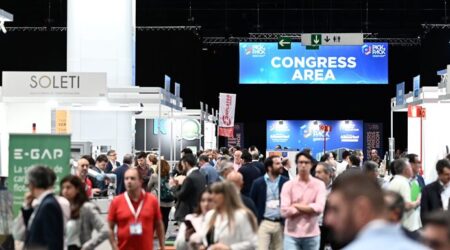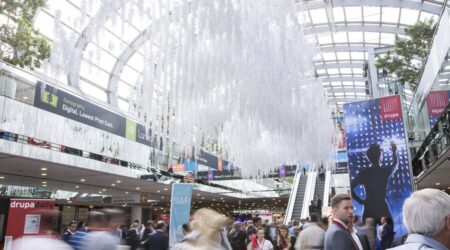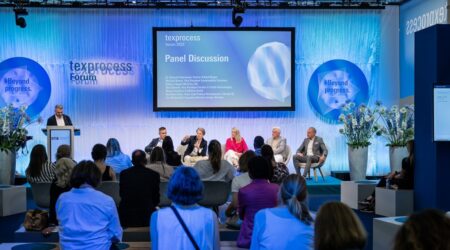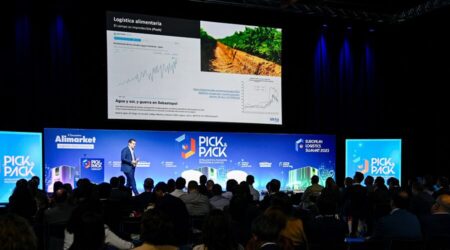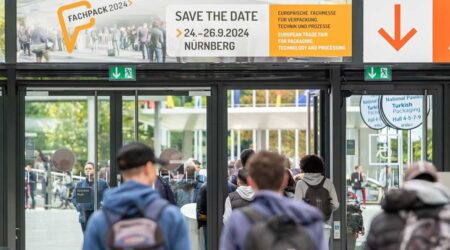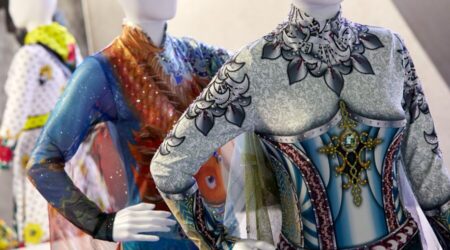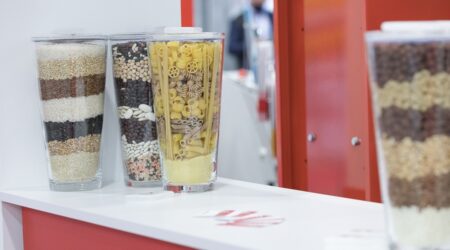Techtextil 2017 addresses architects, construction engineers and planners
Buildtech applications have much to offer for construction using fibres
From textile-based fascia panels over the Bosporus to the German Future Prize 2016 for carbon concrete and the highest glass-fibre membrane project in the world. The forthcoming Techtextil trade fair (9 to 12 May 2017) brings together all these threads featuring the latest innovations in construction. Werner Sobek is in no doubt, “it is almost impossible to imagine any new engineering approach to lightweight construction and design that would not require textile-based materials.” Sobek is a star architect, currently contracted by the industrial group ThyssenKrupp to apply a glass-fibre wrap to an almost 250 metres high elevator testing tower in Rottweil, Baden Württemberg, which also happens to be the world’s highest membrane project. Designed to reduce the tower’s warming, the spiral-shaped fibre wrap has an irregular surface that dampens wind flow and so reduces vibration. It is also designed to catch the eye, of course.
Verseidag supplies the necessary special fabric. The textile manufacturer from Krefeld and Techtextil exhibitor is just like any supplier of building materials for Sobek. “Cooperation with textile companies like Verseidag is part of my everyday working life, just as cooperation with steel or concrete suppliers”, declares the building engineer, who embedded textile construction at Techtextil back in the early nineties. And another textile construction topic also started at that time and will be one of the trade fair’s focal points – textile reinforced concrete.
‘Staying’ power
One of the first research projects for textile-reinforced concrete began at the Technical University of Dresden in 1992. The idea was to use fibre fabric instead of steel to reinforce the concrete. Almost a quarter of a century later this construction material, now known as carbon concrete, has been awarded the German Future Prize 2016, the country’s most prestigious prize for innovation. The team of award winners also included Prof. Chokri Cherif, Director of the Institute for Textile Machines and High-Performance Textile Materials Technology (ITM) at the TU Dresden. At the forthcoming Techtextil the institute will be presenting a further development of this award-winning material to incorporate an additional sensory function.
“We want to show how in the future textile-reinforced concrete will enable us to monitor buildings from the inside out for stresses such as elongation, temperature and cracks,” explains Cherif. The researchers do this by harnessing carbon fibres’ conductivity: Mechanical and thermal stresses in a building generate measurable changes in resistance that can be measured by textile sensors incorporated into carbon concrete components. On the ATM stand a bridge demonstrator is used to show visitors to Techtextil who are interested in this material, how these additional sensory benefits of the carbon reinforcement work.
Fibre-based bridge components
The Yavuz-Sultan-Selim Bridge over the Bosporus near Istanbul completed in the summer of 2016, will play an indirect role in supporting Techtextil: ‘solidian’, an exhibitor from Albstadt in Baden-Württemberg supplied glass and carbon reinforcements for the fascia panels of the 320 metres high bridge pillars. Curiously: without these Swabian fascia panels, it would not have been possible technically to complete the project. “The construction company recognised that steel reinforced concrete panels would have been too heavy,” says Roland Karle, managing director of solidian.
When searching for lighter weight options the Turkish builders happened upon experts in lightweight construction from rural Baden-Württemberg: “We received the parameters and conducted a complete static recalculation using textile-reinforced concrete,” explained Karle. “We ended up being significantly below the maximum permitted weight.” Now over a surface area of 3,200 square metres fascia panels made from textile-reinforced concrete soar over the straits between Europe and Asia. Techtextil gives Karle and his team the opportunity to present lightweight construction solutions to an international trade audience and bring them up to speed with the know-how underpinning them.
Buildtech applications at Techtextil
Whether textile reinforced concrete, fabric for lightweight structures or functional textiles: Techtextil (09 to 12 May 2017), the leading trade fair for technical textiles and non-wovens, introduces architects, building owners, construction engineers and planners to a wide range of fibre-based materials for the ‘Buildtech’ sector. This year more than 500 of the over 1,400 exhibitors are again showcasing products for this application area.
www.techtextil.messefrankfurt.com


